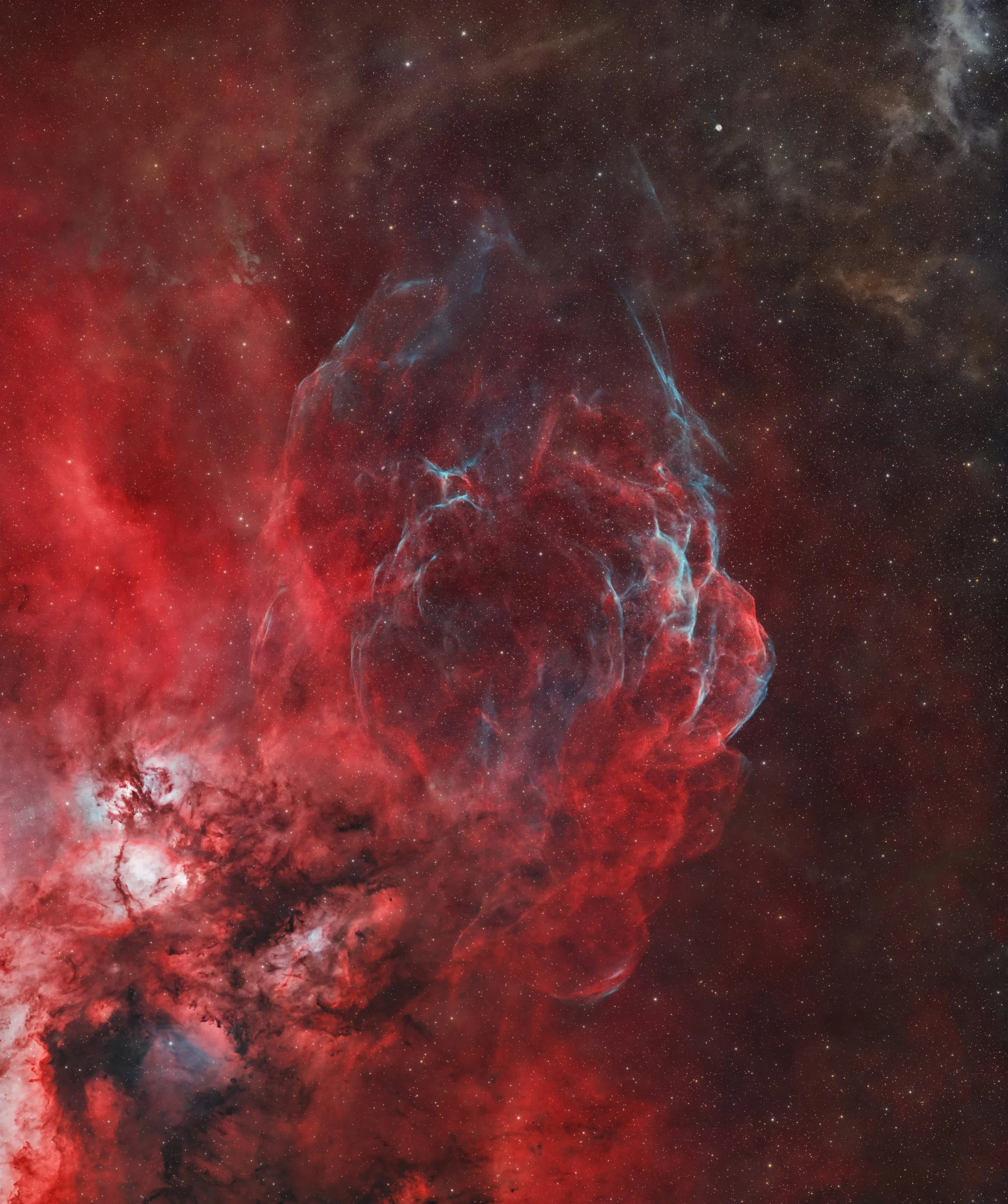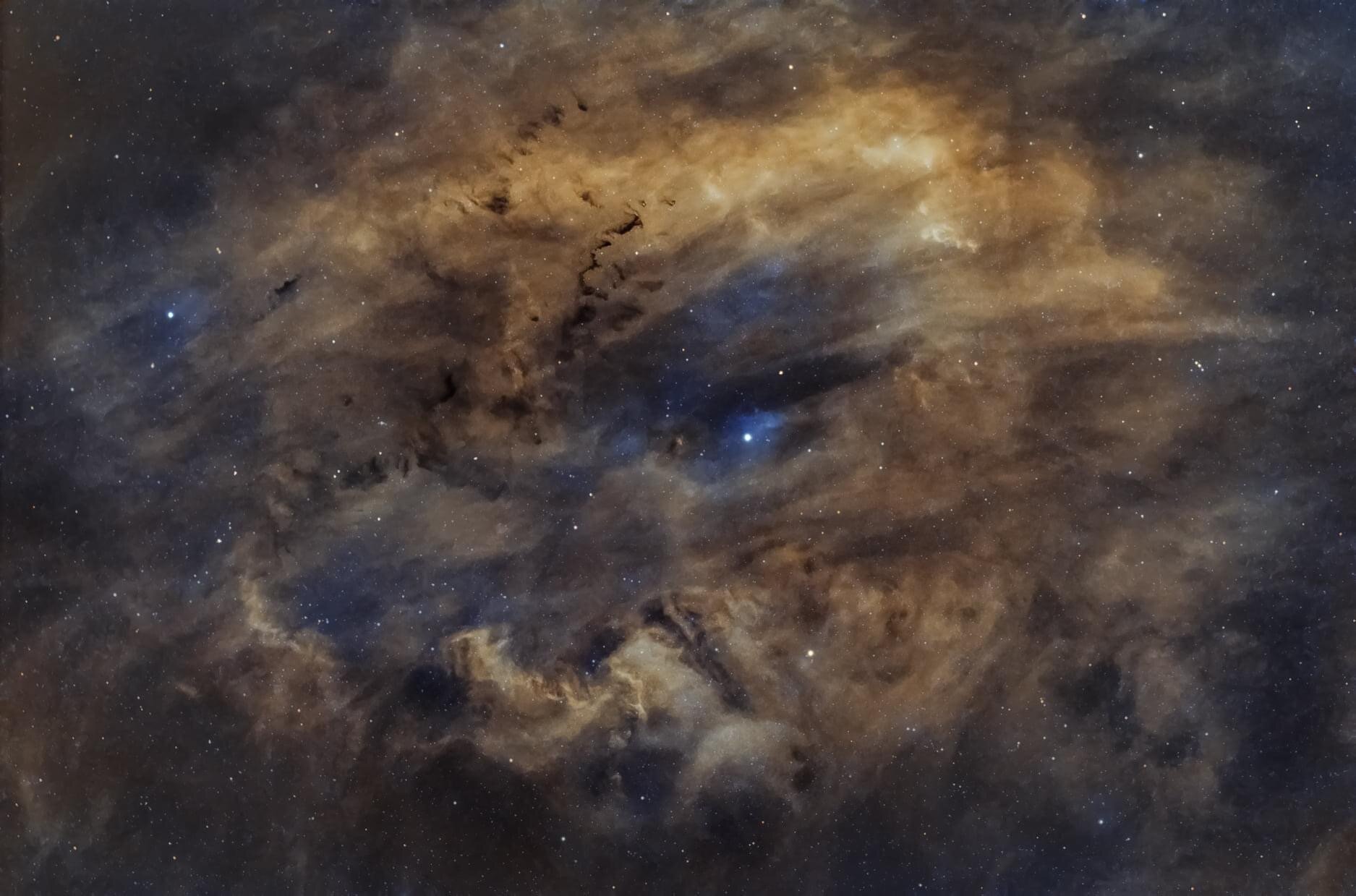
AAPOD2 Image Archives
SNR G132.7+01.3 (HB3)
SNR G132.7+1.3, known as HB3, stretches across a massive 1.5° x 2.0° in the sky as one of the largest supernova remnants in our galaxy. Despite its size, this remnant is faint in the OIII wavelength, demanding a dedicated 140 hours of exposure to bring out its delicate structure. Captured in LRGB-HOO, this image is our most ambitious project yet, completed in collaboration with the AAA team.
Supernova remnant G107.5-5.2. — the Nereides nebula in Cassiopeia
In this celestial masterpiece, we peer into the aftermath of stellar cataclysms through the lens of the cosmos. Supernova remnants, such as the captivating G107.5-5.2, bear witness to the explosive demise of massive stars, unleashing unimaginable energies that ripple through the fabric of space. These remnants, like ghostly echoes of celestial fireworks, exhibit intricate structures of ionized gas and dust, adorned with vibrant hues that tell the tale of elemental creation. Each remnant is a cosmic crucible, where the remnants of an exploded star mix and mingle, seeding the cosmos with the building blocks of new generations of celestial bodies. As we explore the remnants of these stellar explosions, we unravel the dynamic forces that shape our galactic landscape and gain a profound glimpse into the majestic cycles of stellar life and death.
SH2-129 and OU4 in OIII-RGB
This composite image features a captivating 2-panel mosaic of the intricate SH2-129 and OU4 nebulae, highlighting their stunning OIII-RGB emission patterns. Through the implementation of specialized filters, the mosaic vividly portrays the intricate interstellar structures and the distinct emission characteristics of these nebulae. SH2-129, also known as the Flying Bat Nebula, boasts dynamic filamentary features, while OU4, the Iris Nebula, exhibits intricate details and a captivating ring-like appearance. The utilization of the OIII-RGB technique enhances the contrast and color separation of the nebular components, providing valuable insights into the ionized gas dynamics and the underlying physical processes driving the evolution of these stellar nurseries.
Sh2-119
Last astrophotography done mid-July on 5 straight nights.
This is Sh2- 119 show nebula from the Sharpless catalog, located in the Swan constellation.
Little photographed object, dark and H-Alpha gas areas and especially Oiii can be captured with long poses.
Especially since the moon was well present, so I used my L-Extrem filter to capture the signal from these two gases.
I used a PixInsight script from Zloch Team Astro (again thanks for all you tutorials if by chance you see this message..) to create a layer of Sulfure gas and mix all three layers into SHO - which results Interesting.
The 10 min posing times will have allowed me to be even more picky on my stationing and self-guiding. At this time we don't really have the right to ' about ' anymore.
A huge thank you to Yann Sty for all his tips: settings + treatment.
Matos+exives:
- EQM35 Pro mount driven via EQMOD
- bezel TS 71 SDQ f / 6.3
- ZWO ASI 2600 MC camera / gain 100 offset 50 / cooled to-10°C
- 90 x 600 s or 15 h with the L-extrem
- 20 x 120 sec in RGB with IDAS LPS P3 filter for stars
- 50 DOF
- pre-treatment + extraction of Ha and Oiii layers with SIRIL
- treatment with PixInsight and Photoshop.
Copyright: Nicolas Martino





